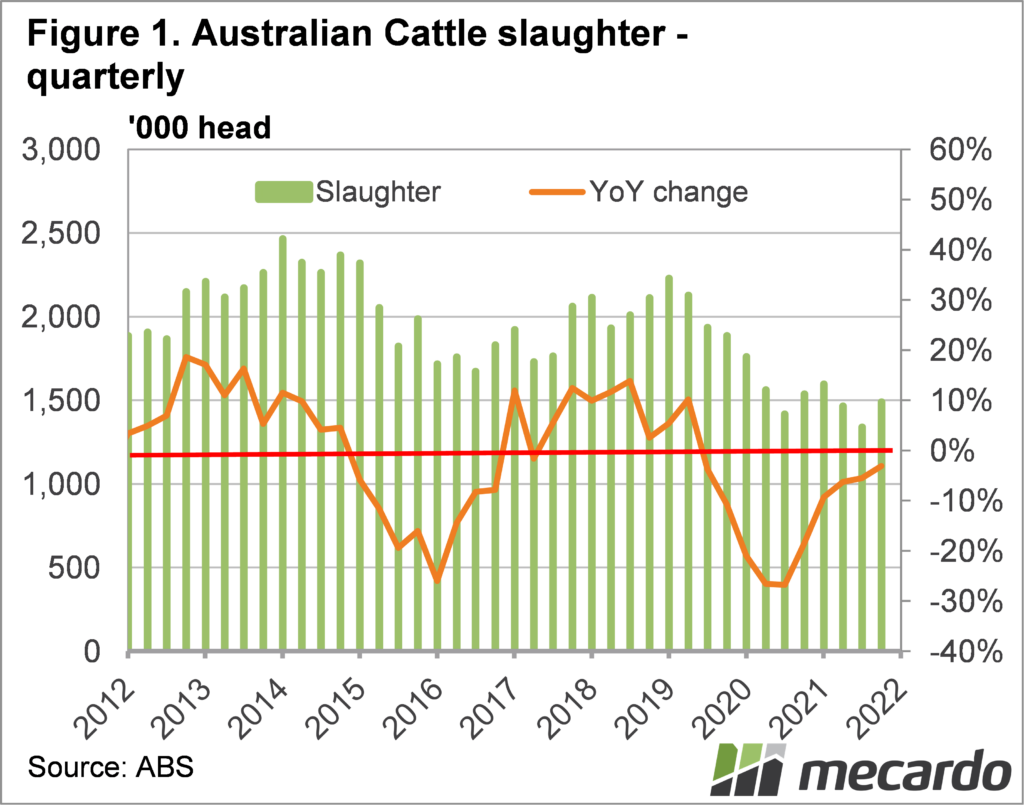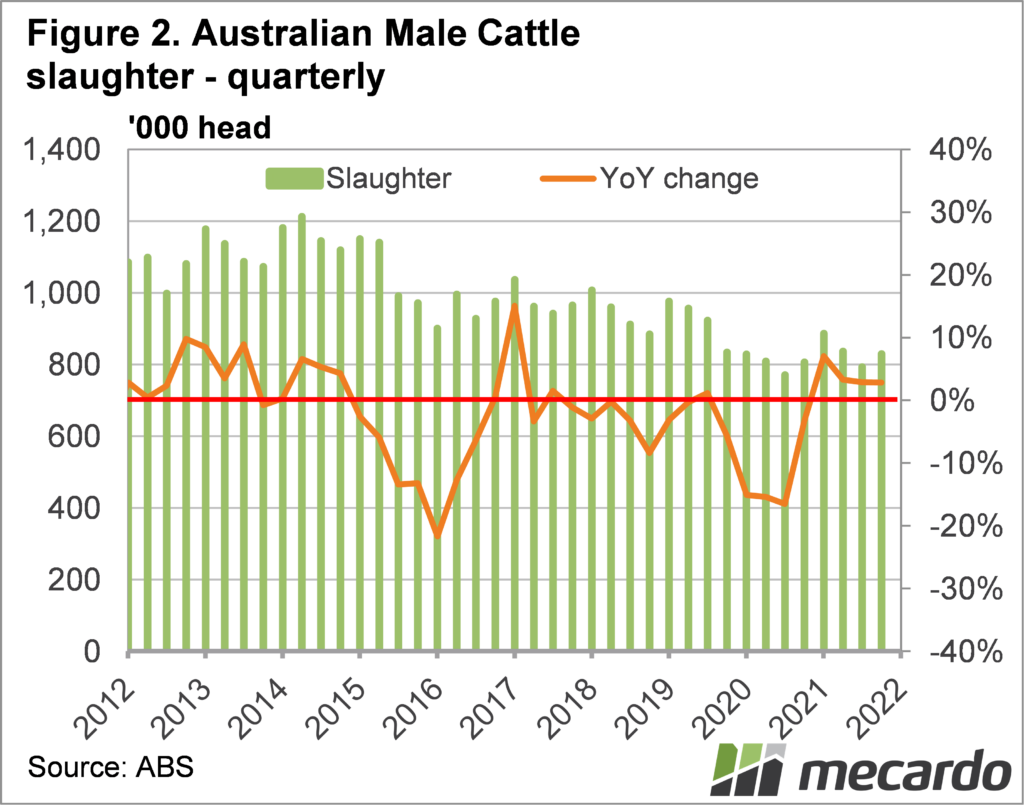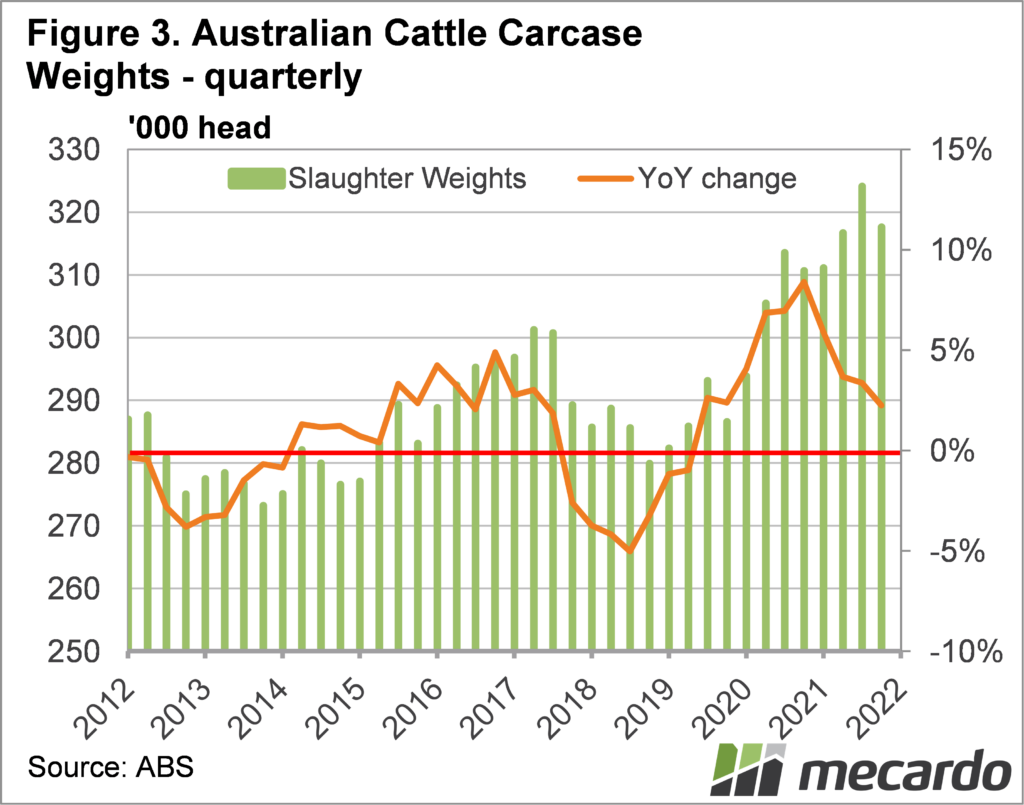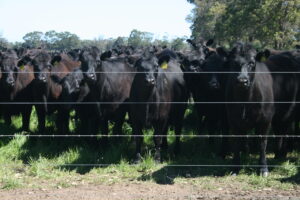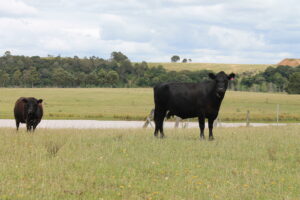The quarterly Australian Bureau of Statistics (ABS) data has been released for the June quarter and while the trend is still lower, we might be seeing the start of the turn upwards. More recent data supports the theory that the March quarter was the low.
There is an obvious lag in the ABS cattle slaughter data, but it’s still worth a look to get a broad picture of how slaughter is tracking.
Figure 1 shows total Australian cattle slaughter jumped higher in the June quarter. Rising slaughter in the June quarter is the norm, as the slow start in January, and public holidays generally restrict March numbers.
Cattle slaughter for the June quarter was up 11% on March, but continued the general trend lower, coming in 3% lower than June 2021. For the 2021-22 financial year cattle slaughter came in 6.6% lower than 2020-21, the lowest level since 1984.
The year on year change shown in figure 1 remains negative, but continues to trend upwards. With 18 months of solid herd rebuild behind us now, we can expected cattle slaughter to start posting year on year increases this year.
Figure 2 shows we have already been seeing higher year on year slaughter rates for male cattle for a year already. Steer and bull slaughter posted a 3% increase on the June 2021 quarter. For the 2021-22 financial year, male slaughter was 4% higher than 2020-21.
Higher male slaughter tells us the fruits of the herd rebuild are flowing, as it is a direct result of more calves being produced. Female slaughter remains in herd rebuild mode, there will be more on this later in the week.
While slaughter volume looks to have reached a low in the March quarter, cattle slaughter weights look to have reached a peak. Figure 3 shows cattle slaughter weights pulling back to 317kgs/head in the June quarter.
Slaughter weights are still very high historically, and a are a result of a high proportion of male cattle, abundant feed supplies and high rates of lotfeeding. The June quarter slaughter weight was still a solid increase on last year, but figure 3 shows the rate of increase is trending lower.
What does it mean?
June cattle slaughter and beef production data confirms the herd rebuild continued at least until the middle of the year, but is yet to really impact cattle supplies in a positive way. It is likely we are close to the point where cattle supplies, and therefore slaughter, starts to trend considerably higher. The trend of more male cattle being on offer will continue, and at some stage we’ll start to see increasing numbers of females coming to the market.
Have any questions or comments?
Key Points
- June quarter cattle slaughter was higher, but still down year on year.
- The number of male cattle slaughtered continued to rise in June, as the herd rebuild starts to impact.
- Carcase weights fell back, but remain extremely strong, higher compared to last year.
Click on figure to expand
Click on figure to expand
Click on figure to expand
Data sources: ABS, MLA





